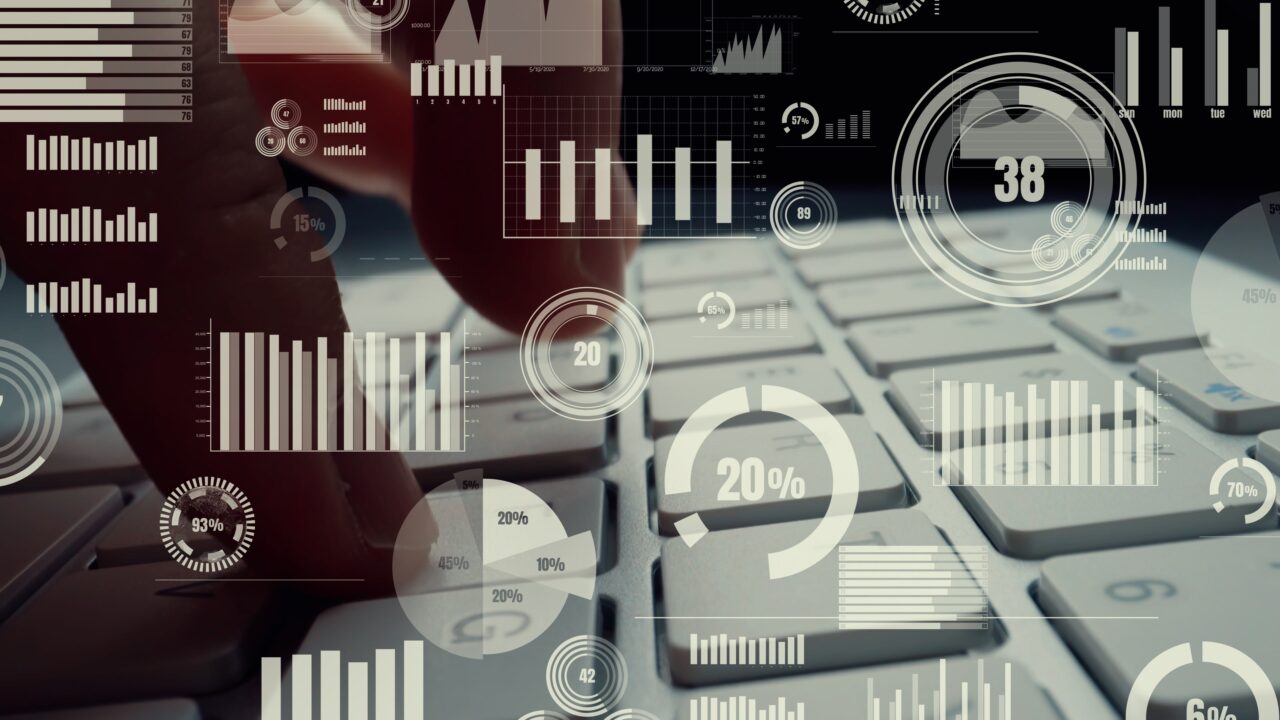A well-structured purchasing policy is the key to a company’s growth. More and more companies, aware of this reality, have taken structural decisions to adopt an effective purchasing management strategy. On average, purchasing accounts for 60% of the turnover of European companies. Managing expenditure, and more broadly expenditure commitments, can become a real performance driver. That’s why purchasing software has become an essential tool for optimising company management in recent years. Automating the purchasing process, managing supplier relations, controlling costs, facilitating financial analysis, monitoring performance indicators, etc. Purchasing software makes a real contribution to business productivity, thanks in particular to the considerable time it saves. How does all this come about?
Purchasing software: an essential management tool for your business
What is purchasing software? What exactly is it used for? These are all legitimate questions about a system that is as useful as it is effective. Purchasing software is a management tool that administers a database of all company purchases, using functions that meet the specific needs and challenges of purchasing activities.
Purchasing software enables users to monitor the life cycle of purchasing files: purchase requests, orders, budget, invoicing, delivery, etc. It also facilitates the administrative management of your suppliers. The extent to which you can use the software depends on the size of your company and its purchasing maturity. With purchasing software, most tasks are automated and you gain in maturity because you are naturally guided towards good practice.
To really optimise your purchasing process and really boost your margins and productivity, you need to use the right purchasing software for your needs. The ultimate guide to digitising purchasing, an excellent purchasing software package is one that is perfectly suited to your activities, so that it becomes a lever for your company’s growth.


Purchasing software to make sales easier
The buyer’s job is more complex than ever because of the globalisation of trade, financial and social crises, geopolitical and environmental issues, etc. The tough negotiations on prices are increasingly being replaced by the digitalisation of commercial procedures. That’s why, to stay in the race for success, companies need to equip themselves with tools to improve their processes and generate positive externalities. Digital transformation is the key to success.
However, a study shows that a significant proportion of purchasing directors and managers (around 33%) are not convinced of the total effectiveness of digitising their field. While there may be doubts about whether a profitability objective has been achieved, this should not be the only reason for making a decision. In fact, purchasing management software promotes theefficiency of a purchasing strategy and contributes to the deployment of new technologies. All of which means competitive advantages for the company.
A buyer’s tasks are divided into two different areas. The tedious tasks, which include operational procedures (49%) and strategic procedures (51%). A large proportion of these tasks can be automated using purchasing software, allowing your buyers to concentrate on their core business. It is estimated that 70% of operational costs can be automated and managed by good purchasing software.
Choosing the best digital solution for effective purchasing management
The selection of your purchasing software should be based on the scale of your company’s activities. All your requirements should be set out in detail, ideally in a set of specifications, so that you can find software that meets your expectations. This work is all the more useful because if you don’t find a suitable solution, you can present this document to a service provider to develop the software directly to meet your needs.
When choosing the best purchasing software for SMEs, make sure that the functionalities match perfectly with your current management tools and that they can be integrated. This makes it easier for your staff to do their jobs, and data transfer is automatic. Make sure that the software is sufficiently dynamic to enable you to manage your purchases as effectively as possible. Check that you can make direct use of the dashboards that have been set up and that the information transmitted is as explicit and accessible as possible. The fewer adjustments you make, the happier your staff will be!
So, once you’ve selected the purchasing software of your choice, you’ll be able to see the benefits associated with :
- Less time spent managing suppliers, dealing with paperwork, tracking supplier orders and invoices, etc
- Increased productivity, because the most time-consuming operational tasks are automated in favour of value-added tasks,
- Provision ofbetter quality information,
- Better traceability and risk management,
- Control of stocks and out-of-stock scenarios,
- Improved communication and interconnection between departments within the company,
- Faster processing of purchasing files,
- Strategic purchasing policy compatible with supplier requirements,
Purchasing software: for better management of your business
The primary function of purchasing software is to facilitate a company’s management process. More specifically, by automating the company’spurchasing processes, the software helps to build up margins without having to increase prices. In other words, improved competitiveness. To remedy the complexity of your commercial procedures and boost the performance of your buyers, break away from unsuitable or obsolete purchasing processes and policies that hamper the running of your company’s activities.
Other management studies have shown that CEOs and CFOs attach real importance to the evolution of purchasing processes. A company’s growth is based on strategic plans, good management, the development of an effective process, the choice of tools to implement, etc
Software can help you manage your purchasing and, more broadly, your company’s operational processes. With just a few clicks, you can monitor in real time the status of all purchasing files and the staff involved, the current state of stocks and product supplies, the main tasks of your buyers, etc. Your purchasing software also enables you to target all the areas for improvement in your organisation’s purchasing policy: service rates, quality policy, CSR objectives, etc
There are solutions that go beyond purchasing management. More advanced programmes can provide you with information about your suppliers. Some will even allow you to issue online invitations to tender. At the same time, your internal customers will now be able to place their orders online, because purchasing software usually comes with a rich, well-stocked catalogue with all the details of each item. This is known as e-procurement.
Purchasing management software: a real search engine
Thanks to purchasing software, you can save a considerable amount of time and find your supplier invoices and their purchasing files in record time. You can obtain a general list of your invoices and those sorted according to specific criteria. You can download them directly from the software or in CSV, XLS or PDF format.
You can also specify your invoice searches and refine them according to the pre-defined criteria you have decided to integrate into your software. Make sure your supplier accounts are properly maintained, and keep track of purchase invoices awaiting payment, single invoices from a group of invoices, invoices for amounts greater than the initial agreement, etc. Finally, refine your searches using more detailed criteria: purchases made in the last quarter or half-year, provisions to be made in the next financial year, etc
As you will have noted, purchasing software allows you to create as many criteria and parameters as you like: dates or periods, type or amount of purchase, including or excluding VAT, exact amount or range, payment method (cash, cheque, bank card, transfer, bill of exchange, etc.), supplier code and name, purchase status (pending or paid), description, etc
Manage your purchases online and control your company’s budget
Purchasing is a strategic function, as it cuts across several processes and affects the majority of company departments. With online purchasing software, you can manage your company’s budgets more effectively through a centralised interface. To simplify the management of your purchases, classify your expenditure by setting up the types of purchase by family: purchases of goods, office supplies, rental charges, small supplies, advertising campaigns, etc. This will help you to analyse all your expenditure using reliable, quantified information.
Create a supplier database that is easily accessible and transparent to your staff. Before each new integration, make sure you record a code in the supplier information. This will facilitate your supplier accounting in the event of a CSV file extraction or integration with your ERP accounting system. Once your supplier code has been registered, adding a purchase will automatically complete the relevant fields.
Online purchasing management also facilitates expense management, and in particular expense commitments. You’ll be able to control costs more effectively by knowing the status of the payment (payment in progress or made) and the payment date. Everyone will know the status of payments, even if the status of the purchase has changed since it was debited from your accounts. You’ll know exactly what your forecasts are for payments to be made, and you’ll be able to easily identify payments that your suppliers have not yet collected.
Designating an invoice allows you to identify it, find it and process it more easily. The purchasing software provides you with a dedicated field to improve invoice processing.
Finally, thanks to upstream configuration of the company’s catalogue of products and services, and also from the purchasing categories, the “expense account” field is already filled in. As a result, accounting reprocessing will be all the more optimised because it has already been pre-entered with the right expense accounts.
Get into the habit of downloading your purchase invoices in PDF format. You’ll save time when you need to send it by e-mail or when you need it urgently.
Export your purchases using the “export” function in your purchasing management software. This is a table similar to a purchasing journal. This will save your accountant time and make his work easier. Or opt to integrate the software with your ERP!
Create and implement an effective purchasing policy
Even if purchasing software is a very powerful tool for facilitating company management, if your company does not have a well-founded purchasing strategy, its sales approach will remain flimsy. A purchasing policy is all the more important if your company needs to source specific quantities of products or well-defined services in order to operate. If your company is to achieve its objectives, it needs an excellent procurement strategy and the ability to control it.
The purchasing policy, often drawn up by purchasing directors or purchasing managers (general management in SMEs), is in line with the company’s objectives. It sets out the general provisions and procedures to be adopted in the conduct of purchasing activities.
It must respect a number of operational and organisational imperatives. For example, the strategy must match the company’s financial resources. The purchasing policy must also define the best solution for the company in terms of its supply chain. In this way, it determines requirements and defines the appropriate purchasing process.
One of the best ways to build good relationships with suppliers is to establish a good purchasing policy. To integrate a sustainable approach, don’t hesitate to opt for a responsible and innovative purchasing policy. Thanks to this effective procurement strategy, your company’s purchasing department will be able to identify the right levers to respond to suppliers’ requirements as the market fluctuates.
In order for your purchasing strategy to stay on track and work in harmony with your purchasing software, you need to be able to analyse the performance indicators of your purchasing function. In other words, you need to analyse the data available to you in order to pull strategic strings while keeping an eye on market trends.
Set measurable and quantifiable objectives. At the same time, put in place indicators that will help you assess the potential impact of decisions that may be taken during the year.
There are currently a number of digital solutions, such as Weproc, that can be used to control company spending. This purchasing management software enables you to monitor your company’s purchasing projects in real time, so you cananticipate futureexpenditure and make the right provisions. Thanks to the many features of the purchasing function, you can automatically categorise your expenditure by type, product or supplier. For this management process to be as effective as possible, you need to make a few settings beforehand to ensure that your company reaps all the benefits of using it. The criteria assigned must be well defined, examined and simplified. Thanks to Weproc, you can perfect your purchasing policy and enable your staff to carry out value-added tasks.
Want to learn more about our procurement management software Weproc? Contact us or request your free 15-minutes demo below!


Weproc is a SaaS software specialized in digitizing the procurement process of companies. From purchase requests to supplier invoicing, through the validation process, Weproc is designed to simplify the purchase management of SMEs and mid-sized companies by centralizing all purchase-related activities.





